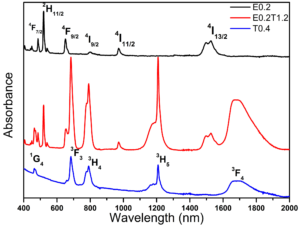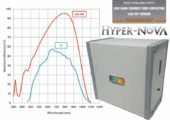X Liao, X Jiang, Q Yang, L Wang, D Chen – Materials, 2017
Abstract
A series of Er3+/Tm3+ co-doped fluoride (ZBLAN) glasses and fibers was prepared and their fluorescence spectra was measured under excitation at 793 nm and 980 nm. Correlation between the self-absorption effect of rare-earth ions and the shift of the emission peak was investigated. With the increasing length of fiber, the emission peaks red-shift when self-absorption occurs at the upper level of emission transition or blue-shift when that occurs at the lower level. As a result of the strong self-absorption effect, Er3+/Tm3+ co-doped fibers mainly yield 1390–1470, 1850–1980, and 2625–2750 nm emissions when excited at 793 nm, and 1480–1580, 1800–1980, and 2625–2750 nm emissions when excited at 980 nm. Further, a broadband emission in the range of 1410–1580 nm covering the S + C communication band was obtained by the dual-pumping scheme of 793 nm and 980 nm. Results suggest that the dual-pumping scheme would be more effective and important for an Er3+/Tm3+ co-doped fiber amplifier working in the S + C communication band.
The spectra were recorded with an InGaAs detector in the range 1300–1650 nm, a StellarNet RED-Wave NIRx spectrometer (Tampa, FL, USA) in the range 1650–2200 nm and a liquid nitrogen cooling InSb detector in the range of 2580–2800 nm. All measurements were carried out at room temperature.






